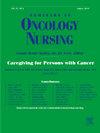The Effect of Cold Therapy on the Prevention of Chemotherapy-Induced Peripheral Neuropathy in Oncology Patients: A Systematic Review Study
IF 2.3
4区 医学
Q1 NURSING
引用次数: 0
Abstract
Objective
The aim of this study was to investigate the effect of cold therapy on the prevention of chemotherapy-induced peripheral neuropathy in oncology patients.
Methods
This review was prepared based on the Preferred Reporting Items for Systematic Reviews and Meta-Analyzes. The Medline, CINAHL, Embase, Cochrane Library, PubMed, Scopus and Web of Science databases were searched for studies published between January 1997 and June 2024. Two reviewers independently evaluated study suitability and extracted data. The Jadad critical appraisal scale and Methodological Index for Non-Randomized Studies (MINORS) risk of bias tool was used for quality assessment. The findings of this review are presented using a narrative synthesis.
Results
Overall, cold therapy was effective in preventing CIPN in more than half of the studies. Cold therapy methods such as cold hilotherapy, frozen gloves and socks, cold mitts and slippers, and cooling gloves/socks were found to be the most effective in six studies. In contrast, three studies that applied interventions like frozen gloves and socks, crushed ice, and various cooling methods did not show a significant effect.
Conclusion
Cold therapy was found to be a reasonable option for preventing CIPN in patients receiving taxane-based chemotherapy, as it does not result in serious side effects. Due to the heterogeneity of studies with different methods, sample sizes and measurement procedures for CIPN, it is difficult to make a clear statement about the duration and temperature of cold application that the patient can tolerate.
Implications for Nursing Practice
Cold therapy can provide a useful option for the prevention of CIPN in patients receiving taxane-based chemotherapy. Nurses should increase patient and provider awareness of the benefits of cold therapy for CIPN.
PROSPERO registration ID
CRD42024619942
冷疗法对肿瘤患者化疗诱导的周围神经病变的预防作用:一项系统回顾研究。
目的:探讨冷疗法对肿瘤患者化疗所致周围神经病变的预防作用。方法:本综述是根据系统评价和meta分析的首选报告项目编制的。检索了Medline、CINAHL、Embase、Cochrane Library、PubMed、Scopus和Web of Science数据库,检索了1997年1月至2024年6月间发表的研究。两名审稿人独立评估研究适用性并提取数据。采用Jadad临界评价量表和非随机研究(未成年)偏倚风险方法学指数进行质量评价。这篇综述的发现是用叙事综合的方式提出的。结果:总的来说,在超过一半的研究中,冷疗法对预防CIPN有效。六项研究发现,冷疗法、冷冻手套和袜子、冷手套和拖鞋以及冷却手套/袜子等冷疗法最有效。相比之下,三项采用冷冻手套和袜子、碎冰和各种冷却方法等干预措施的研究没有显示出显著的效果。结论:冷疗法是预防紫杉烷类化疗患者CIPN的合理选择,因为它不会导致严重的副作用。由于采用不同方法、样本量和测量方法的CIPN研究存在异质性,因此很难明确说明患者可以耐受的冷敷时间和温度。对护理实践的启示:冷疗法可以为接受紫杉烷类化疗的患者提供预防CIPN的有用选择。护士应提高患者和提供者对CIPN冷疗法益处的认识。普洛斯彼罗注册id: CRD42024619942。
本文章由计算机程序翻译,如有差异,请以英文原文为准。
求助全文
约1分钟内获得全文
求助全文
来源期刊

Seminars in Oncology Nursing
Nursing-Oncology (nursing)
CiteScore
3.40
自引率
0.00%
发文量
68
审稿时长
45 days
期刊介绍:
Seminars in Oncology Nursing is a unique international journal published six times a year. Each issue offers a multi-faceted overview of a single cancer topic from a selection of expert review articles and disseminates oncology nursing research relevant to patient care, nursing education, management, and policy development.
 求助内容:
求助内容: 应助结果提醒方式:
应助结果提醒方式:


